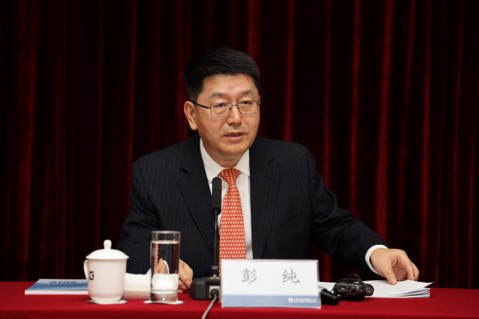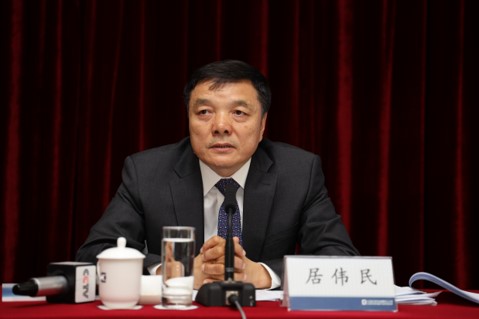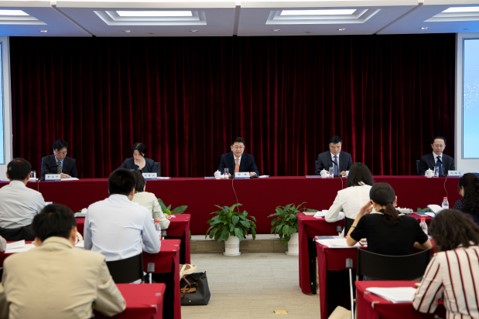Media
CIC Released Annual Report 2018
20-09-2019On September 20, 2019, China Investment Corporation (CIC) released the Annual Report 2018 (Annual Report) approved by the Board of Directors, the 11th annual report that CIC has released since its establishment.
The Annual Report disclosed CIC’s overseas portfolio, financial situations, performance and domestic equity management. It also elaborated on CIC’s progress made on corporate governance, investment strategies and management, risk management, human resources and global outreach.

Mr. Peng Chun, Chairman and CEO of CIC, said in the message that 2018 was a rough year for international institutional investors such as CIC. Given the wild swings of the global capital market and increased volatility of risk assets, major stock markets suffered their worst year in ten years. The entire CIC staff acted in concert to surmount difficulties, build institutional capacity, and hone operations and management processes for a good start in the new strategic period.
The Annual Report shows that Although major stock markets took a toll on CIC’s overseas investments, its 10-year cumulative annualized net return was 6.07% and exceeded the company’s ten-year performance target by 45 bps. In 2018, CIC’s net return exceeded the annual performance benchmark by 371 bps and outperformed the market. The performance of the 17 companies in which Central Huijin holds shares steadily improved, and their net profits harvested a 3.1% year-on-year increase. At the close of 2018, CIC’s assets had steadily grown, with USD 940.6 billion in gross assets and USD 858.8 billion in net assets. The annualized growth rate of state-owned capital had reached 13.46% since its inception. The gross assets and net assets of Central Huijin’s 17 holding companies in total had reached CNY 123 trillion and CNY 10.2 trillion, with a year-on-year increase of 6.0% and 9.0% respectively.
Public equity, fixed income, alternative investments and cash and others respectively take up 38.3%, 15.2%, 44.1%, and 2.4% of CIC’s global portfolio
On investment strategies, CIC adopts the Reference Portfolio framework, which consists of public market equities and fixed-income products. The framework also included the Three-year Policy Portfolio, the Annual Policy Portfolio/Target Portfolio, and the Actual Portfolio. The Three-year Policy Portfolio makes allocations to other asset classes and active strategies and is expected to outperform the Reference Portfolio with a higher risk-return profile. The Annual Policy Portfolio/Target Portfolio takes into account the progress of alternative investment and short-term market views. In 2018, the company effectively responded to market changes and progressively reduced portfolio risk and leverage. The actual portfolio return exceeded Policy Portfolio return, which in turn exceeded Reference Portfolio return. It also further optimized allocation efficiency for long-term assets. The weight of alternative investments (including direct investments) in the company’s overseas investment portfolio reached 44.1%, up 4.8 percentage points from the previous year.

On investment management, we continued to implement refined management of public market investments, adjust and optimise our investment strategy and the makeup of managers, and carry out new strategic investments such as risk factor investing. Progressively, we increased our investment in alternative assets, consolidated our private equity investments, increased investment in assets with stable returns and stepped up co-investments in various ways. We also continued to develop our professional platform for direct investment, and enhanced compliant interaction between private equity investment and direct investment. We continued seeking new approaches for overseas investment and actively participated in the Belt and Road Initiative by setting up new bilateral funds with the United States and Japan and seeking to establish bilateral funds with the United Kingdom and France as a step to further promote two-way cross-border investment cooperation.
On investment support, we fine-tuned our risk management tools, methods and systems, and employed effective risk management to convoy the company’s development. For lawful and compliant operation, strict firewalls exist between CIC International and CIC Capital in their overseas investments, and between the overseas investments conducted by CIC International and CIC Capital and the domestic investments undertaken by Central Huijin. We continued to improve the post-investment management system by strengthening monitoring and analysis and deepening management and value creation. We fostered synergy at various levels, ameliorating the research system, and deepening development of operational systems. We also implemented an assessment framework for net investment income, furthered benchmarking of cost effectiveness against peer organisations, and continuously enhanced investment payment capabilities.
On investment cooperation, CIC participated in multilateral meetings, mechanisms, and forums such as those of the G20, B20, Institute of International Finance and International Chamber of Commerce. It also engaged in bilateral dialogues and cooperation mechanisms such as those with France, Japan, Russia, the United Kingdom, and the United States. We strived to build a multi-dimensional cross-border investment ecosystem, having successfully organised events such as the CIC Forum, China-US Business Summit, and China-Japan Business Forum, thereby providing a platform for two-way cross-border investment exchange and cooperation.
On domestic equity management, Central Huijin celebrated its 15th anniversary in 2018. For 15 years, Central Huijin leveraged its market-oriented and professional platform to inject capital into 19 financial institutions, and assisted in the public listing of 11 financial institutions. Central Huijin indeed played a unique role in deepening the reform of the financial system, achieving preservation and appreciation of asset value, and maintaining financial stability. It has explored and established the unique "Huijin Model” for managing state-owned financial capital, a model that emphasizes capital management, features dispatching of equity directors, and adopts a market-oriented approach to exercising rights and performing obligations. In 2018, Central Huijin focused on intensifying the development of its investment and operation platform for state-owned financial capital, played the strategic leading role of driving its holding companies to serve the real economy, prevent and control financial risks, and deepen financial reform. At the end of 2018, Central Huijin managed state-owned financial capital worth CNY 4.3 trillion, approximately 40% of central state-owned financial capital.

2019 marks the 70th anniversary of the establishment of the People’s Republic of China and a key year for building a moderately prosperous society in an all-round way. With greater scientific rigour in decision-making, better efficiency in implementation and increased stringency in management, we will increase the rate of return of our investment portfolio, and remain as the ever faithful and responsible guardian and manager of state-owned assets.
As a Chinese poem goes, “without the continuous bitter cold, there can be no fragrant plum blossom”. The tougher the road, the sweeter the taste of success—pain precedes gain. Mr. Peng Chun, Chairman and CEO of CIC, said in the message that through years of exploration and relentless efforts, CIC put in place market-oriented systems and highly professional investment management teams as key assets and resources of the company. As we stand at the historical crossroads, CIC’s new leadership will bear in mind our mission and original aspiration, and strive to strengthen the company’s development. We will unite and work pragmatically, inheriting legacies and seeking to reform as we push on. And they will build on past achievements and thrive for a magnificent future.
Please refer to Annual Report 2018 for more information.

